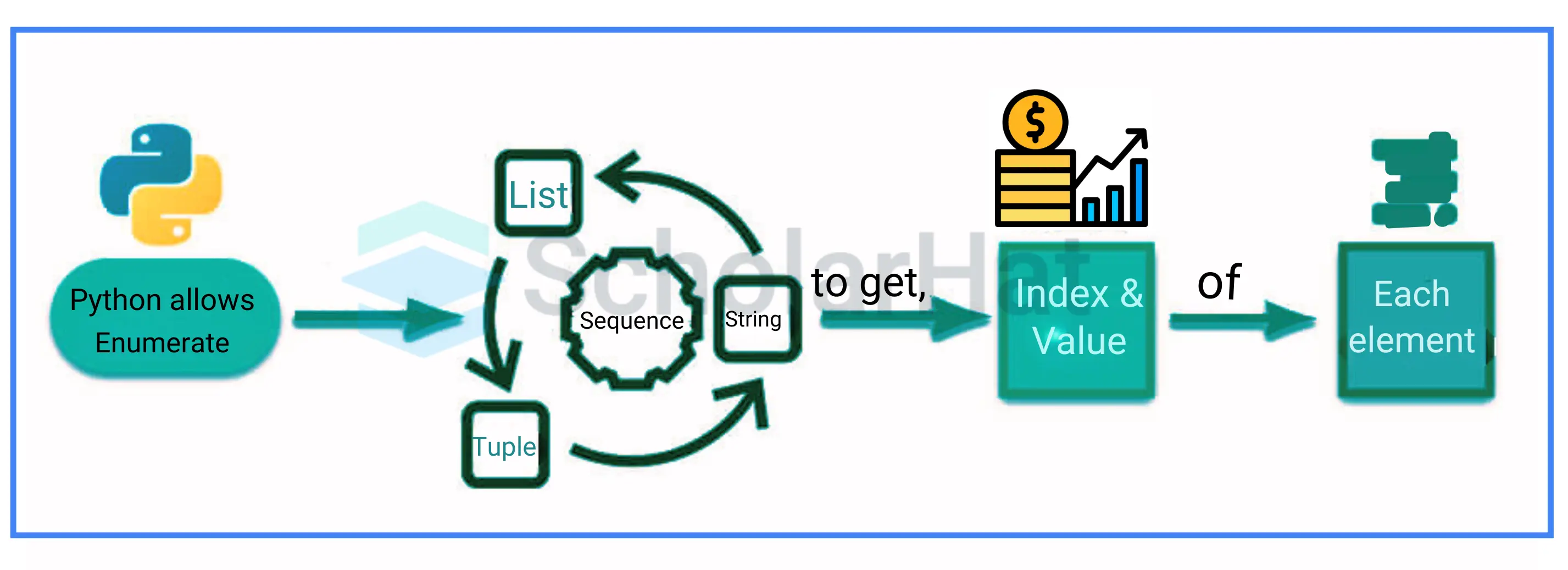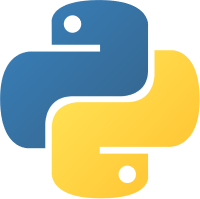06
DecThe enumerate() Function in Python
Enumerate() in Python
Python's enumerate() function is like having a tour guide for your lists built from the beginning. This useful function allows you to see every item in your list and also displays your item's current position inside the list. Enumerate() is made for activities such as counting, tracking progress, or simply better understanding your data. It allows us to loop through our list. Enumerate() is used to maintain track of both the index and the item at the same time.
In this Python Tutorial, we will explore more about enumerate() in Python, including the enumerate() function with examples and its syntax. 70% of tech jobs demand Python. Don’t miss out—join our Free Python Course with Certificate and code your way to success!
What is enumerate() in Python?
The enumerate() function adds a counter to an iterable and returns it as an enumerate object which means an iterator with an index and the value.
1. Syntax
enumerate(iterable, start=0) 2. Arguments
3.enumerate() Return Value
- The enumerate() function has a counter to an iterable and which returns values.
- The iterator creates a series of tuples. Each tuple with an index and the value from the iterable is called an enumerate object.
- We converts the enumerate objects to lists and tuples with the use of list() and tuple() functions.

Working of Enumerate() in Python?
students = ['rhyma, 'shivnya', 'chetan', 'dinesh']
for index, student in enumerate(students):
print(f"Index {index}: {student }")
Applications of Enumerate() Function in Python
1. List Conversions
2. Concurrent List Operations
3. Multiple Data Type Listing
4. Personalized Indexing
Implementation of Enumerate in Python?
1. In Iterable Program
2. In For Loop
3. Accessing the Next element with the Index and its Value
4. Using Enumerate Python Set
1. Example: Python enumerate()
company= ['employee1', 'employee2', 'employee3']
# enumerate the list
enumerateCompany = enumerate(company)
print(list(enumerateCompany))
# set default counter to 10
enumerateCompany = enumerate(company, 10)
print(list(enumerateCompany)) Output
[(0, 'employee1'), (1, 'employee2'), (2, 'employee3')]
[(10, 'employee1'), (11, 'employee2'), (12, 'employee3')] 2. Enumerate Object in For Loop
company= ['employee1', 'employee2', 'employee3']
for item in enumerate(company):
print(item)
print()
# loop over an enumerate object
for count, item in enumerate(company):
print(count, item)
print()
# change the default counter and loop
for count, item in enumerate(company, 50):
print(count, item)
Output
(0, 'employee1')
(1, 'employee2')
(2, 'employee3')
0 employee1
1 employee2
2 employee3
50 employee1
51 employee2
52 employee3
3. Accessing the Next Element using enumerate()
In Python, we can use the next() function to access the next element from an enumerated sequence. For example,company= ['employee1', 'employee2', 'employee3']
enumerateCompany= enumerate(company)
# accessing the next element
next_element = next(enumerateCompany)
print(f"Next Element: {next_element}")
Output
Next Element: (0, 'employee1')
4. Using Enumerate Python Sets
- Python sets are unordered collections of data.
- The items inside them are immutable and thus, cannot be changed after they are included.
- The unordered nature of sets means that the arrangement in which the things inside are accessed is conflicting.
- They cannot be focused on by an index value, as they don't have one.
- The enumerate function associates a counter as a key to each item within the set.
- This could help to create structure in an unordered collection.
- Enumerating the set gives us more control over how ready to interact with it dependably.
Example
# create a set by using curly braces
girlNames={"riya","janki","shreya","maithili"}
#print the second item
print(girlNames[1])Advantages of Using Enumerate() Function
1. Simplified Index Tracking
2. Readability
3. Preventing Off-By-One problems
4. Memory Efficiency
Disadvantages of Using Enumerate() Function
1. Extra Complexity
2. Potential Performance Overhead
3. Restrictions on Use
FAQs
Take our Python skill challenge to evaluate yourself!

In less than 5 minutes, with our skill challenge, you can identify your knowledge gaps and strengths in a given skill.






